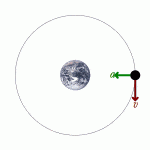Types Of Morphemes
Learn about Types Of Morphemes. Morpheme is generally considered as grammatical unit. In linguistic it is a small unit of language and its study is called morphology. These are not typical words of a language. Morphemes are different from normal word. You must be thinking now how these are different if both are small units of language. The basic different between the types of morphemes and a word is the freestanding property. Morphemes do not necessarily exist as free word whereas word is always free standing. A word may have one or more than one morphemes. But, a morpheme can never comprise of any words inside it. Another difference is that they may or may not be semantic. It is not always necessary that these types morphemes are semantic.
You can classify these types of morphemes into two main types. If you ant to understand the details of morphology then you must understand what is this morpheme and its related types. Two types of morphemes are free morphemes and bound morphemes. Any morpheme you study must be belonging to any of these categories. They are not belonging to both of these categories. Let’s see these types in details.
Free morphemes are those that have an independent identity. They sparsely act as a word and they may also appear along with other lexemes. As single word they act like town, city etc and along with lexemes they are like town hall. Second part of morphemes always comes with words and it is a part of the words. They are in conjunction with other bound morphemes or a root. Suppose ‘UN’ this is one example of bound morpheme. You can’t use it alone and it always comes along with conjunction. These are called affixes in English. These are must bound types of morphemes that may be suffix or prefix.
Other than these two main types of morphemes bound morphemes are also sub divided into two categories. These are derivational morphemes and inflectional morphemes. Derivational morphemes as the name indicates are derived forms. When they are used in the sentences they change the part of speech. Hey change an adjective to a noun. Or they change a noun into adjective. Derivative morphemes can also change semantic meanings. Let’s see this example. Happiness is a word in which happy is bound to morpheme ‘ness’. In this example an adjective is changed into a noun. In another example unkind, ‘UN’ is morpheme which is bound to a root word kind and it has changed the semantic of the word.
Second types of morphemes are the inflectional. This only changes the tense of the verb. Neither part of speech of a morpheme changes in this inflectional nor semantic. The only difference is observed in the tense. Suppose example of wait. After adding ‘ed’ into wait it becomes waited. Another type is cranberry morpheme. They are not affixes and these are also called unique morphemes that are only used as single words. Another type is allomorphs that have o affect on semantic and part of speech but they only produce a difference in pronunciation.






